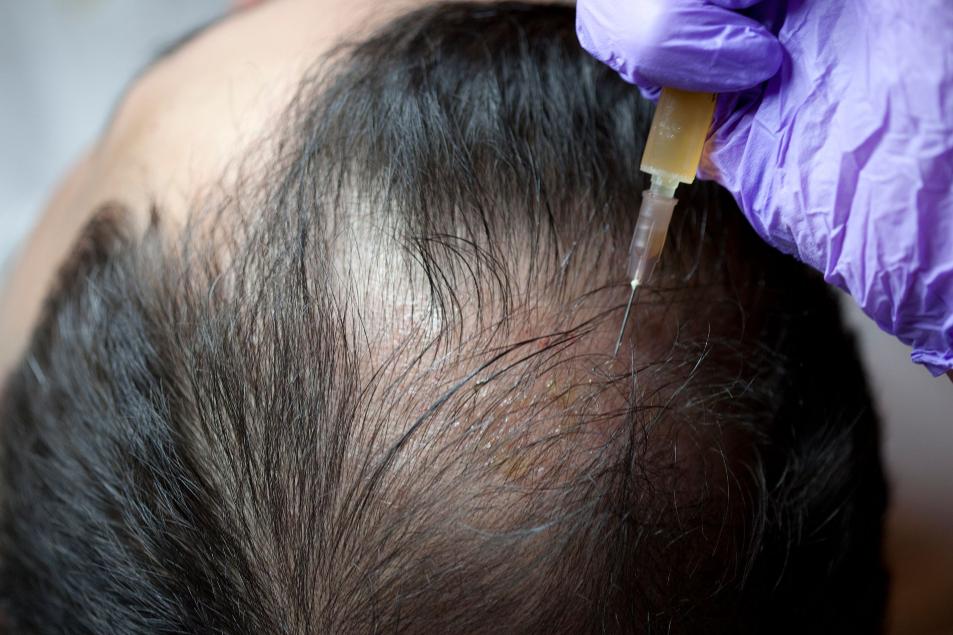At Purifi in Nashville, we believe in empowering our clients with knowledge about the treatments they choose. That’s why we’re diving deep into the science behind one of our most effective hair restoration options: PRP therapy. “How PRP Hair Restoration Works: A Scientific Breakdown” aims to demystify this cutting-edge procedure and explain precisely how it stimulates hair growth at a cellular level.
Understanding PRP: The Power of Your Own Blood
PRP, or Platelet-Rich Plasma, is a revolutionary approach to hair loss that harnesses the body’s own healing mechanisms. It begins with a simple blood draw, similar to what you experience during a routine checkup. This blood sample is then processed using a centrifuge, a specialized machine that spins the blood at high speeds. This process separates the blood’s components, isolating the platelets and concentrating them within the plasma. This concentrated solution is what we call PRP.
Growth Factors: The Key to Hair Regeneration
The real magic of PRP lies in its rich concentration of growth factors. These growth factors are essentially signaling molecules that play a critical role in cell regeneration and tissue repair. When introduced to the scalp, these growth factors stimulate dormant hair follicles, encouraging them to transition into the active growth phase. Think of them as giving your hair follicles a wake-up call and a boost of energy.
Several key growth factors contribute to PRP’s effectiveness in hair restoration:
- Platelet-Derived Growth Factor (PDGF): This growth factor promotes cell growth and division, which is essential for hair follicle regeneration and repair.
- Vascular Endothelial Growth Factor (VEGF): VEGF stimulates the formation of new blood vessels, improving the blood supply to hair follicles. A richer blood supply means more nutrients and oxygen, creating an optimal environment for hair growth.
- Transforming Growth Factor-beta (TGF-β): TGF-β plays a crucial role in hair follicle cycling, helping to regulate the transition between the resting and growth phases.
- Fibroblast Growth Factor (FGF): FGF stimulates hair follicle growth and strengthens existing hair shafts, leading to thicker, healthier hair.
The PRP Procedure: A Step-by-Step Guide
Once the PRP is prepared, it’s carefully injected into the scalp at the areas experiencing hair thinning or hair loss. These injections are typically performed using a very fine needle to minimize discomfort. The growth factors in the PRP then begin their work, stimulating the hair follicles and triggering the regenerative process.

How PRP Stimulates Hair Growth
The injected PRP creates a microenvironment that is highly conducive to hair growth. The growth factors stimulate the hair follicles, prompting them to transition from the resting phase (telogen) to the active growth phase (anagen). This transition is crucial for new hair growth. It’s important to understand that this process takes time. Patients typically begin to see noticeable improvements in hair density and thickness within a few months of treatment.
Personalized Treatment Plans at Purifi
PRP hair restoration is not a one-time fix. It’s a process that usually involves multiple sessions spaced several weeks apart to achieve the best possible results. The exact number of sessions will vary depending on the individual patient’s needs, the severity of their hair loss, and their overall treatment goals. At Purifi, our experienced team will work with you to develop a personalized treatment plan tailored to your specific situation. You can learn more about our personalized approach to PRP treatments, including hair restoration, by visiting our dedicated page:
The Advantages of PRP Hair Restoration
One of the significant advantages of PRP hair restoration is its use of the patient’s own blood. This minimizes the risk of allergic reactions or other adverse side effects. It’s a minimally invasive procedure with little to no downtime, allowing patients to return to their normal activities almost immediately.
Is PRP Right for You?
While PRP is not a cure for all types of hair loss, it has proven to be a highly effective treatment for many individuals. It can stimulate hair growth, improve hair density, and slow down or even prevent further hair loss. It’s a safe, natural, and increasingly popular option for those seeking to restore their hair and their confidence.
If you’re experiencing hair loss and are curious about whether PRP hair restoration is right for you, we encourage you to schedule a consultation with our team at Purifi in Nashville. We’ll assess your hair loss, discuss your goals, and help you determine the best course of action to achieve the results you desire.

